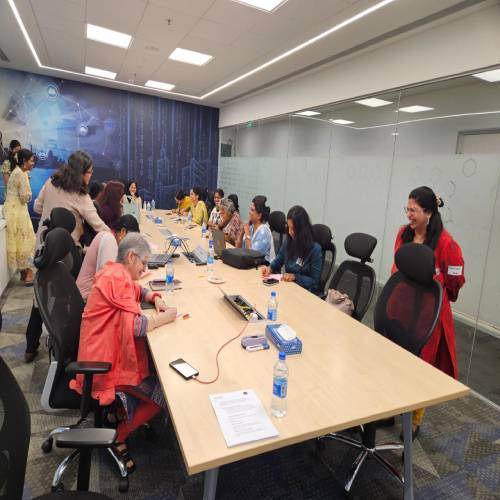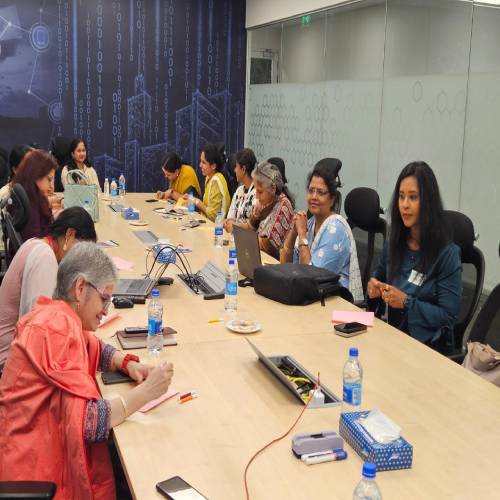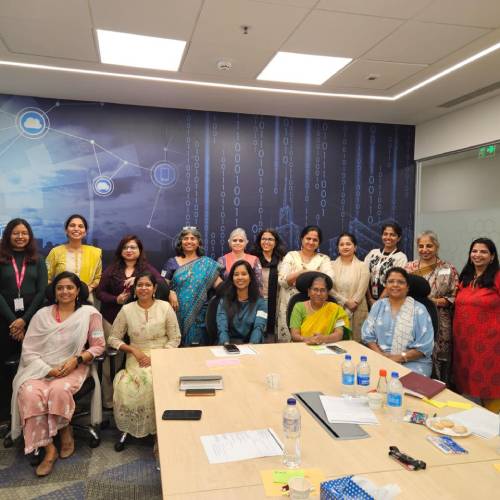5 December 2024: HYSEA and Sama co-hosted a roundtable discussion on “Inclusive Growth: Advancing Women in MSME Workforce” at Centific, Hyderabad. The event brought together 15 senior HR, L&D professionals, and business leaders from prominent IT organizations, including Infosys, Centific, LTI Mindtree, Chug, Hyundai, and Cigniti. The primary objective was to identify the challenges and co-create actionable solutions for increasing women’s representation in IT MSMEs.
The objective of this round table was two-fold:
Identify Challenges: To understand the specific barriers IT MSMEs encounter in recruiting, retaining, and promoting women within their organizations.
Explore Solutions: To co-create actionable strategies that IT MSMEs can adopt to increase women’s representation and enhance gender diversity
Key Insights & Takeaways
Elder caregiving and family responsibilities significantly impact women participation and retention in the workforce.
Conscious and unconscious biases affect recruitment, promotions, and leadership opportunities for women, reinforcing social conditioning and stereotypes.
Flexible work policies, targeted learning and development (L&D) programs,
and mentorship initiatives are critical to supporting women’s career progression and
addressing systemic barriers.
Challenges and Opportunities
Challenges:
1. Women often bear the burden of elder care and domestic responsibilities, leading to workforce attrition and limited career growth.
2. Social conditioning, unconscious biases, and gender-based assumptions in recruitment, promotions, and roles restrict women’s opportunities.
3. Safety concerns, extended work hours, and relocation after marriage create additional barriers for women.
4. Lack of mentors, role models, and tailored support systems discourages women from pursuing leadership positions.
5. Personal questions during interviews and biases in campus recruitments disproportionately disadvantage women.
Opportunities:
1. Implement flexible work arrangements, such as time flexibility for caregiving par and escort cab services for night shifts.
2. Establish robust mentorship and L&D programs to foster confidence and build pipelines for leadership roles.
3. Redesign policies to include elder care support, return-to-office assistance for women post-pregnancy, and onsite childcare.
4. Increase awareness of updated workplace policies and train all employees to recognize and address biases.
5. Create exclusive forums or councils to address women’s workplace concerns and provide targeted health and well-being programs.
Outcomes & Next Steps Outcomes:
1. 100% of participants reported that the roundtable increased their awareness and understanding of the issues surrounding gender equity in the workplace
2. 66% of participants showed keen interest in enhancing the L&D capabilities at their workplaces and about 55% want to do more around retention of employees.
3. Participants reported the following as key takeaways for them: Organizations should prioritize financial and retention planning, establish a gender-focused council, address glass ceiling barriers, provide eldercare support, and allocate budgets with measurable metrics to achieve gender equality.



